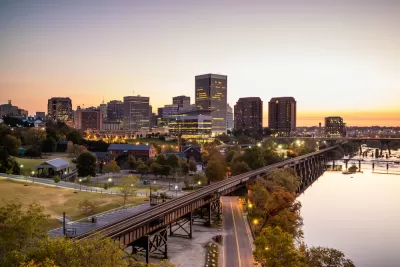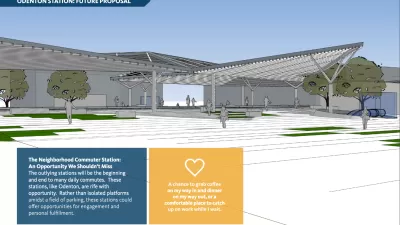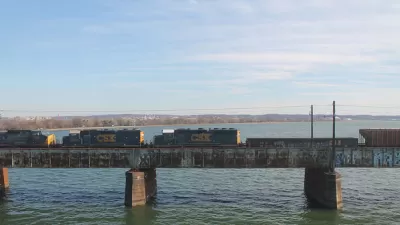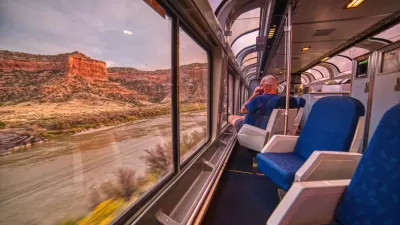Expanding rail service to more communities in Maryland and D.C. could enhance the benefits of Virginia's recent investments in intercity rail.

On the heels of Virginia's significant investments in intercity rail, a business community think tank calls for a "regional rail vision" that includes Maryland and the District of Columbia that would connect the entire region and maximize the benefits of Virginia's work on rail connectivity, writes Wyatt Gordon in the Virginia Mercury.
The goal is a regional rail service that lets commuters travel directly to D.C. and Baltimore from as far south as Richmond without changing trains, which Representative Don Beyer of Alexandria hopes will translate into a "big increase in ridership." Expanded rail service could "translate into big bucks for households and government coffers across the region." Increased connectivity could yield significant economic benefits for the region and boost access to affordable housing, evening out the pressure of the region's high cost of living. "If convenient commutes become a truly regional commodity, home prices closer to the Capitol may also slow their rapid staggering ascent."
"What we’re trying to do is to create more amenable communities to live or create jobs in throughout our region out of places that today are largely inaccessible unless you drive a car like Fredericksburg or Frederick, Maryland," Greater Washington Partnership's vice president of transportation, Joe McAndrew, told the Virginia Mercury. A major challenge for the regional vision is working across jurisdictions. "We are a complicated region with a lot of different governance structures and don’t always get along," Virginia Passenger Rail Authority board member Sharon Bulova said, "but we are able to come together and get things done."
FULL STORY: Regional rail vision aims to stitch Virginia, Maryland and D.C. closer together

Study: Maui’s Plan to Convert Vacation Rentals to Long-Term Housing Could Cause Nearly $1 Billion Economic Loss
The plan would reduce visitor accommodation by 25,% resulting in 1,900 jobs lost.

North Texas Transit Leaders Tout Benefits of TOD for Growing Region
At a summit focused on transit-oriented development, policymakers discussed how North Texas’ expanded light rail system can serve as a tool for economic growth.

Why Should We Subsidize Public Transportation?
Many public transit agencies face financial stress due to rising costs, declining fare revenue, and declining subsidies. Transit advocates must provide a strong business case for increasing public transit funding.

How to Make US Trains Faster
Changes to boarding platforms and a switch to electric trains could improve U.S. passenger rail service without the added cost of high-speed rail.

Columbia’s Revitalized ‘Loop’ Is a Hub for Local Entrepreneurs
A focus on small businesses is helping a commercial corridor in Columbia, Missouri thrive.

Invasive Insect Threatens Minnesota’s Ash Forests
The Emerald Ash Borer is a rapidly spreading invasive pest threatening Minnesota’s ash trees, and homeowners are encouraged to plant diverse replacement species, avoid moving ash firewood, and monitor for signs of infestation.
Urban Design for Planners 1: Software Tools
This six-course series explores essential urban design concepts using open source software and equips planners with the tools they need to participate fully in the urban design process.
Planning for Universal Design
Learn the tools for implementing Universal Design in planning regulations.
Ascent Environmental
Borough of Carlisle
Institute for Housing and Urban Development Studies (IHS)
City of Grandview
Harvard GSD Executive Education
Toledo-Lucas County Plan Commissions
Salt Lake City
NYU Wagner Graduate School of Public Service





























